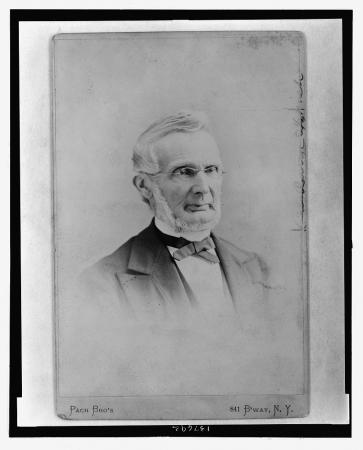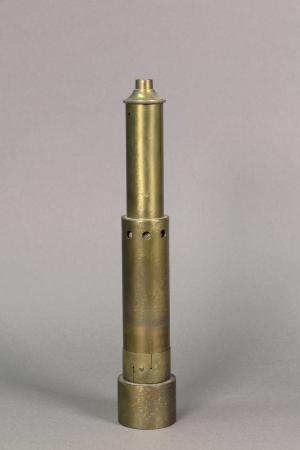Before the advent of GPS, scientists had two ways of determining mountain elevations. The first dates from 1648 when Florin Perier (at the behest of his brother-in-law, Blaise Pascal) took a barometer up the Puy-de-Dôme in France and showed that the atmospheric pressure fell the higher he climbed. The second dates from the 1760s when Jean-André De Luc, in the Swiss Alps, demonstrated that the same was true of the boiling point of water. In time, as mountaineering became a popular recreation and practical necessity, both techniques would be used in ranges around the world.
Joseph Henry, the physicist who served as founding Secretary of the Smithsonian, may never have climbed a mountain or measured high elevations. But he did use institutional resources to spread the word about the latest mountaineering and other scientific instruments. Since Henry read widely and maintained an extensive correspondence, he probably knew that American geologist William Barton Rogers had taken a boiling point thermometer into the Blue Ridge mountains of Virginia in the 1830s, and that James David Forbes, professor of natural philosophy in Edinburgh, did similar work in the Swiss Alps.

Henry’s most important informant, in this regard, was Arnold Guyot, a Swiss naturalist who arrived in the United States in 1848, having fled political upheavals at home, and who became professor of physical geography and geology at Princeton a few years later. Henry and Guyot met at the 1848 gathering of the American Association for the Advancement of Science and began planning a national weather service to be organized by the Smithsonian. In time, Guyot suggested which meteorological instruments the Smithsonian should purchase and which it should recommend to observers in its networks. He prepared the Smithsonian’s Directions for Meteorological Observations (first edition, 1850). An enthusiastic mountaineer, Guyot told Henry about Victor Regnault, the French physicist who had recently introduced a sophisticated boiling point instrument for elevations, coined the term hypsometer, and worked out the calculations for its use. And, in the Tables Meteorological and Physical (first edition, 1852) that he prepared for the Smithsonian, Guyot included information needed for assessing hypsometrical observations.
Henry was initially leery of the hypsometer, warning a correspondent that it might not be “as convenient as you anticipate.” Henry went on to say: “Its character for much accuracy has not been fully established; and for portability, it has not much to boast of over the Barometer.” But, being an open-minded experimentalist, Henry ordered an example from William Wűrdemann, a noted Washington instrument maker. Finding its sensibility to be “astonishing”—a difference in elevation of four feet was “distinctly perceptible”—Henry took his hypsometer to Cincinnati in 1851, for a meeting of the American Association for the Advancement of Science. Back in Washington, he probably put the hypsometer in the Smithsonian Apparatus Room where it could be seen by visitors to the Institution.

Once convinced of the value of hypsometry, Henry turned his attention to other matters. He surely knew, however, that hypsometers would soon be available from commercial instrument makers, that descriptions were to be found in physics texts, and that examples were used by such notable national organizations as the U.S. Coast Survey, and the Army Corps of Topographical Engineers. He knew that the new aneroid barometers, substantially more rugged and portable than traditional ones filled with mercury, were becoming the instruments of choice for mountain explorations.
![Hypsometer from L. P. Casella, An Illustrated and Descriptive Catalogue of Philosophical, Meteorological, Mathematical, Surveying, Optical and Photographic Instruments (London, [1860]). Hypsometer sketch featured in a book.](https://siarchives.si.edu/sites/default/files/styles/body-image-450h/public/blog-attached-images/Scanned%20from%20a%20Xerox%20Multifunction%20Printer%20%281%29.jpg?itok=FwJ2dgrO)
Related Resources
- Joseph Henry A Life in Science, Smithsonian Institution Archives
- "The Smithsonian's First Radiometers," by Deborah Warner, The Bigger Picture, Smithsonian Institution Archives
- "The Spinthariscope and the Smithsonian," by Deborah Warner, The Bigger Picture, Smithsonian Institution Archives
- "William Stimpson and the Smithsonian's First Aquarium," by Deborah Warner, The Bigger Picture, Smithsonian Institution Archives
Produced by the Smithsonian Institution Archives. For copyright questions, please see the Terms of Use.

Leave a Comment